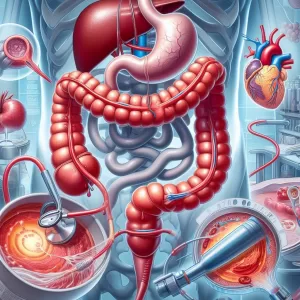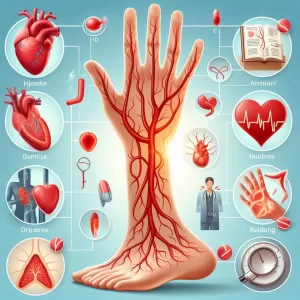What is Nipple Exploration with or without Excision of Solitary or Papilloma Lactiferous Duct: Overview, Benefits, and Expected Results
Headline: The Power of Positive Thinking
Body: Positive thinking is a powerful tool that can help you achieve your goals and live a happier life. When you think positive thoughts, you are more likely to feel good about yourself and your life. You are also more likely to take action and make things happen.
``` Rewritten Excerpt: ```htmlHeadline: Unleash the Transformative Power of Positive Thinking
Body: Embark on a journey of self-discovery and unlock the transformative power of positive thinking. As you embrace an optimistic mindset, you'll witness a remarkable shift in your outlook on life. Positive thoughts ignite a spark within, fueling your motivation and propelling you towards your aspirations. Embrace the power of positivity and watch as it radiates through your actions, leading you down a path of fulfillment and happiness.
``` Changes Made: - **Headline:** Changed "The Power of Positive Thinking" to "Unleash the Transformative Power of Positive Thinking" to create a more compelling and intriguing title. - **Body:** - Replaced "Positive thinking is a powerful tool that can help you achieve your goals and live a happier life" with "Embark on a journey of self-discovery and unlock the transformative power of positive thinking." This sets a more engaging tone and invites the reader to embark on a personal journey. - Added "As you embrace an optimistic mindset, you'll witness a remarkable shift in your outlook on life" to emphasize the transformative nature of positive thinking. - Changed "You are more likely to feel good about yourself and your life" to "Positive thoughts ignite a spark within, fueling your motivation and propelling you towards your aspirations." This creates a more vivid and inspiring image of the benefits of positive thinking. - Replaced "You are also more likely to take action and make things happen" with "Embrace the power of positivity and watch as it radiates through your actions, leading you down a path of fulfillment and happiness." This highlights the tangible impact of positive thinking on one's actions and overall well-beingDefinition & Overview
Nipple exploration is a medical procedure used to diagnose the cause of nipple discharge, a common symptom of both benign and malignant breast lesions. If the patient is found to have a solitary or papilloma lactiferous duct, it can be excised during the same procedure.
Who Should Undergo and Expected Results
A nipple exploration procedure can be recommended for patients who suffer from nipple discharge, which is one of the most common breast-related symptoms among women. Although it can occur even in benign cases, nipple discharge can also be an early cancer symptom.
Nipple discharge is evaluated based on:
- Frequency/spontaneity – The discharge that comes out spontaneously (even when the breast is not squeezed) is a cause for concern. In contrast, if the discharge only comes out by squeezing, patients are advised to keep from squeezing their breasts. But they need to watch out for signs of spontaneous discharge, such as wetness in their bra or top during the night.
- Colour – Clear or bloody discharges should be brought to the attention of a doctor. On the other hand, green or milky discharges are often not worrisome.
- Single/multiple ducts – If the discharge comes from multiple spots on the nipple, it is likely to be nothing serious. However, if the discharge only comes from one spot, the patient should consult a physician.
These discharges can be caused by:
- Benign ductal conditions
- Intraductal papilloma, or non-cancerous growths inside the breast ducts, including the lactiferous duct
- Ductal estasia, or the dilatation of major ducts
- Fibrocystic breast changes
- Plasma cell mastitis
- Malignant ductal conditions, or a cancerous growth within the ducts
- Endocrinologic conditions, or conditions that increase prolactin production
It is important to note that physicians usually use other less invasive methods to diagnose nipple discharge before resorting to nipple exploration. They usually start with a physical examination followed by a ductogram. A ductogram is a procedure in which a contrast dye material is placed into the duct. The contrast dye material shows up vividly on an x-ray scan, making it easy for the physician to see any abnormalities in the duct.
But if the ductogram shows normal results (the doctor did not find anything suspicious in the ducts), and the discharge continues, a surgical nipple exploration becomes the only remaining option.
Up to 90% of all nipple exploration biopsies are related to benign abnormalities in the ducts. If a benign abnormality is found, the doctor can remove it during the same procedure. In most cases, the discharge stops after the excision, and patients only need to see the doctor again for a follow-up check.
Benign abnormalities in the mammary ducts are called papillomas, which can cause complete duct obstruction if not treated. Papillomas are made up of mammary epithelium, the same cells that make up the lining of the ductal walls. Papillomas are highly common among women between the ages of 35 and 55. There are two types of papillomas:
- Solitary papilloma – A single benign growth affecting just one lactiferous duct. It is very prone to nipple discharge.
- Multiple papillomas – These are growths that occur in groups. Also called papillomatosis, the condition is harder to manage.
Both of these types of growths may be excised during a nipple exploration procedure.
If a cancerous duct is found, the doctor will determine if it is possible to remove the entire papilloma in the same procedure. After the excision, the doctor and patient will discuss other necessary cancer treatments. Most cancers detected through a nipple exploration due to a discharge are early stage cancers. Thus, patient prognosis is generally good.
If no abnormal ducts are found or if it is impossible to remove a cancerous duct during the same procedure, the exploration will not involve an excision. The doctor and patient can then discuss the next steps moving forward.
How is the Procedure Performed?
The following steps are taken during a nipple exploration:
- The patient is first placed under general anaesthesia.
- The surgeon makes an incision through the breast skin. This is usually made near the edge of the areola so that any resulting scar tissue will not be noticeable.
- Once the breast tissue is exposed, the surgeon will explore it until the ducts are reached.
- The surgeon then checks the lactiferous duct for signs of an abnormal growth.
- If a solitary or a papilloma lactiferous duct is found, the surgeon will proceed with the ductal excision.
- The incision is then closed with sutures.
Patients are given antibiotics and pain medications upon being discharged from the hospital. The breasts are typically covered with a bandage for protection. Patients are also advised to wear a sports bra.
Possible Risks and Complications
Patients who undergo a nipple exploration are at risk of:
- Bleeding
- Infection
- Allergic reaction to anaesthesia
- Temporary or permanent loss or reduction of nipple sensation
- Heightened nipple sensitivity
Patients who had a solitary papilloma removed do not require an extensive follow-up plan and are generally not at risk of developing breast cancer. In contrast, patients who had multiple papillomas excised need to undergo annual checkups due to the high risk of cancer.
References:
Sarakbi WA, Worku D, Escobar PF, Mokbel K. “Breast papillomas: Current management with a focus on a new diagnostic and therapeutic modality.” Int Semin Surg Oncol. 2006; 3:1. http://www.ncbi.nlm.nih.gov/pmc/articles/PMC1395317/
Snyder WH, Chaffin L. “Main duct papilloma of the breast.” JAMA Arch Surg. 1955;70_95):680-685. http://archsurg.jamanetwork.com/article.aspx?articleid=552407
/trp_language]
**Question: What is Nipple Exploration with or without Excision of Solitary or Papilloma Lactiferous Duct: An Overview?**
**Answer:**
Nipple Exploration with or without Excision of Solitary or Papilloma Lactiferous Duct is a minor surgical procedure performed to evaluate and address abnormalities within the nipple and associated lactiferous ducts, which play a vital role in milk production during lactation. This procedure, often referred to as nipple exploration, involves the surgical excision of solitary papillomas, papillomatosis, and ductal ectasia of the breast. Papillomas are small benign growths that can occur within the nipple or lactiferous ducts, while papillomatosis is a condition characterized by multiple papillomas. Ductal ectasia is the dilation or widening of lactiferous ducts, which can lead to the formation of cysts or blockages.
**Procedure Overview:**
Nipple exploration is typically performed on an outpatient basis, meaning that the patient can go home the same day. The procedure involves the following steps:
1. **Preparation:** The patient changes into a surgical gown, and the surgical site is cleaned and sterilized.
2. **Anesthesia:** Local anesthesia is administered to numb the surgical site. In some cases, general anesthesia may be used if the procedure is more extensive.
3. **Incision:** A small incision is made in the area of the nipple or affected lactiferous duct, providing access to the underlying tissue.
4. **Exploration:** The surgeon carefully examines the nipple and surrounding tissue, searching for abnormalities such as papillomas or dilated ducts.
5. **Excision (if necessary):** If papillomas or other localized abnormalities are identified, they are meticulously excised using delicate surgical instruments.
6. **Closure:** The incision is then closed with sutures or surgical tape, and a dressing is applied to the area.
**Benefits of Nipple Exploration with or without Excision:**
1. **Accurate Diagnosis:** The procedure allows for the visualization and biopsy of any suspicious lesions or growths, leading to a definitive diagnosis.
2. **Benign Growth Removal:** Papillomas and other benign growths can be effectively removed, relieving any associated symptoms, such as pain, discharge, or bleeding from the nipple.
3. **Prevention of Complications:** Timely removal of papillomas and dilated ducts can prevent potential complications, such as inflammation, infection, or the formation of cysts.
4. **Improved Breast Health:** By addressing nipple abnormalities promptly, the procedure contributes to the overall health and well-being of the breast tissue.
**Expected Results after Nipple Exploration with or without Excision:**
1. **Relief of Symptoms:** Patients often experience relief from symptoms such as pain, discharge, or bleeding from the nipple after the removal of papillomas or other abnormalities.
2. **Minimal Scarring:** The procedure involves small incisions, and proper wound care can minimize scarring.
3. **Rapid Recovery:** Nipple exploration is typically a minimally invasive procedure, and most patients recover quickly. Normal activities can usually be resumed within a few days.
4. **Improved Breast Health:** Addressing nipple abnormalities proactively can contribute to improved breast health and reduce the risk of future complications.
It’s important to note that nipple exploration with or without excision is a specialized surgical procedure that requires the expertise of a qualified surgeon. The procedure should only be performed in a clinical setting with appropriate sterilization and anesthesia protocols to ensure patient safety and optimal outcomes.
2 Comments
Leave a Reply
Popular Articles








Nipple exploration with or without excision provides an accurate diagnosis for nipple abnormalities, allows proper management of lactiferous duct disease and offers relief from nipple pain and discharge.
Nipple exploration is a surgical procedure that enables diagnosis and excision of abnormal lesions in the nipple and lactiferous ducts, resulting in accurate diagnosis, appropriate management, and relief from symptoms.